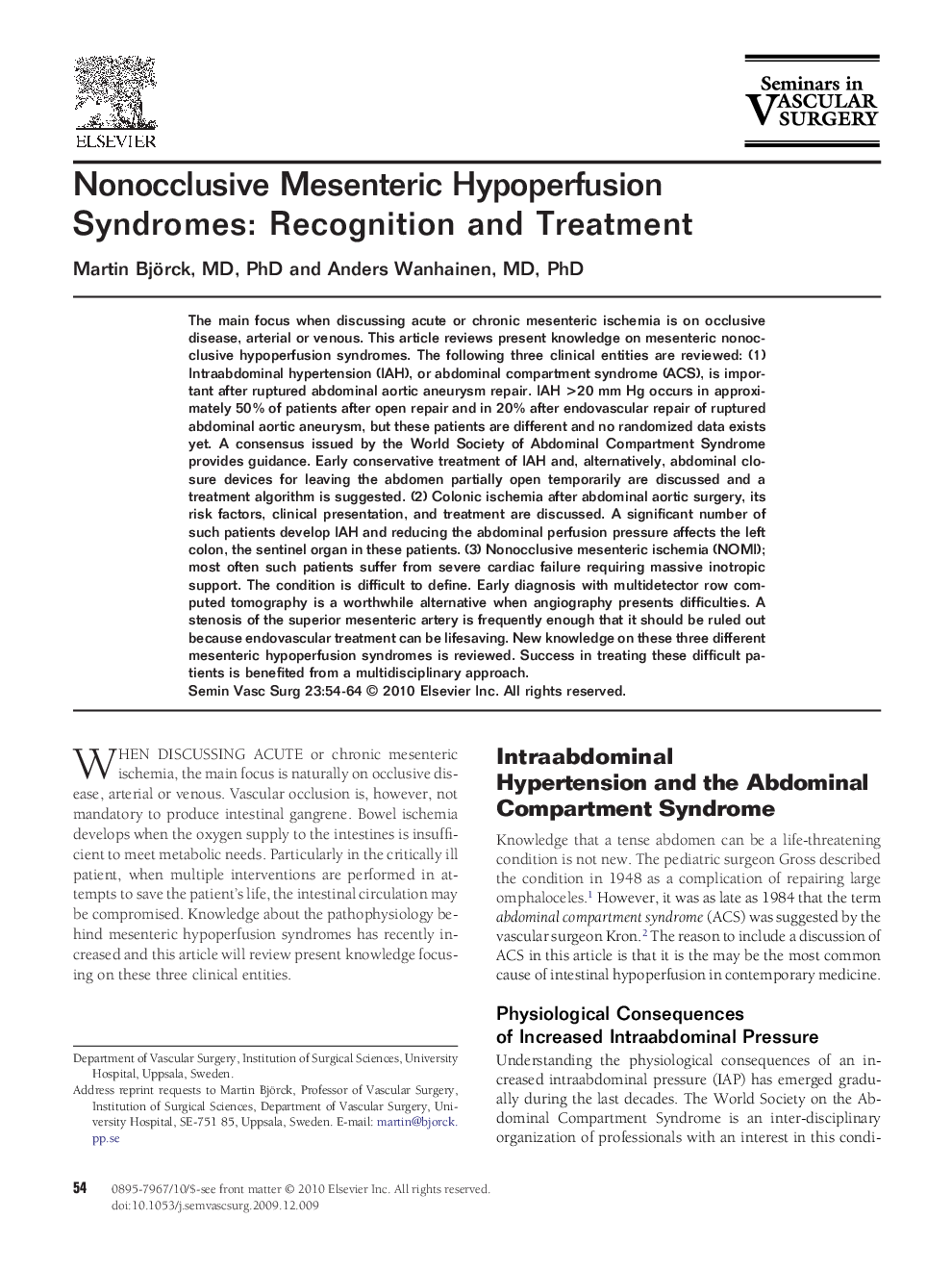| Article ID | Journal | Published Year | Pages | File Type |
|---|---|---|---|---|
| 3026488 | Seminars in Vascular Surgery | 2010 | 11 Pages |
The main focus when discussing acute or chronic mesenteric ischemia is on occlusive disease, arterial or venous. This article reviews present knowledge on mesenteric nonocclusive hypoperfusion syndromes. The following three clinical entities are reviewed: (1) Intraabdominal hypertension (IAH), or abdominal compartment syndrome (ACS), is important after ruptured abdominal aortic aneurysm repair. IAH >20 mm Hg occurs in approximately 50% of patients after open repair and in 20% after endovascular repair of ruptured abdominal aortic aneurysm, but these patients are different and no randomized data exists yet. A consensus issued by the World Society of Abdominal Compartment Syndrome provides guidance. Early conservative treatment of IAH and, alternatively, abdominal closure devices for leaving the abdomen partially open temporarily are discussed and a treatment algorithm is suggested. (2) Colonic ischemia after abdominal aortic surgery, its risk factors, clinical presentation, and treatment are discussed. A significant number of such patients develop IAH and reducing the abdominal perfusion pressure affects the left colon, the sentinel organ in these patients. (3) Nonocclusive mesenteric ischemia (NOMI); most often such patients suffer from severe cardiac failure requiring massive inotropic support. The condition is difficult to define. Early diagnosis with multidetector row computed tomography is a worthwhile alternative when angiography presents difficulties. A stenosis of the superior mesenteric artery is frequently enough that it should be ruled out because endovascular treatment can be lifesaving. New knowledge on these three different mesenteric hypoperfusion syndromes is reviewed. Success in treating these difficult patients is benefited from a multidisciplinary approach.
